Sustainable Packaging in Organic Makeup Brands
flareAI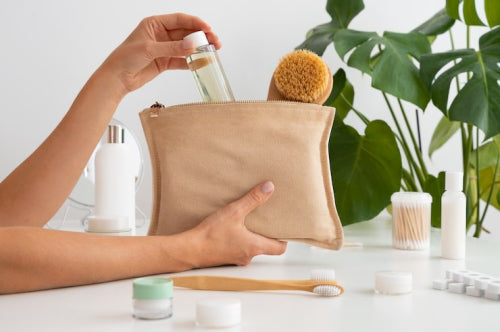
Quick Listen:
Picture this: You're standing in a sun-drenched Singapore boutique, the air thick with the scent of jasmine and citrus, eyeing a tube of lipstick that promises to transform your morning routine. But as your fingers trace the sleek glass container, a nagging thought creeps in what happens to this after the last swipe? In a world where beauty routines collide with climate anxiety, that question isn't just polite small talk; it's the spark igniting a revolution in how we package our glow-ups.
At the heart of this shift lies a story of innovation and intention, one that's reshaping the $36.36 billion global cosmetic packaging market in 2024, projected to climb to $59.80 billion by 2034 at a 5.10% CAGR. And as brands like Liht Organics lead the charge, their commitment to high-performance makeup over 80% clean, organic ingredients safe enough to eat while nurturing your skin pairs seamlessly with packaging that doesn't just contain beauty but sustains the planet. Dive deeper into Sustainable Packaging in Organic Makeup Brands: Leading the Charge for Eco-Conscious Beauty, and you'll see how this isn't mere trend-chasing; it's a blueprint for tomorrow's vanity.
Many women feel trapped by makeup that hides flaws but risks irritation and hidden toxins. This daily choice weighs heavily, dimming confidence over time. Liht Organics invites you to embrace beauty differently. With up to 90% USDA-certified organic ingredients, our vegan, cruelty-free products deliver vibrant color and gentle care, letting you glow with confidence, knowing your skin is nurtured, not compromised. Shop Now!
What Is Sustainable Packaging in the Beauty Industry?
Sustainable packaging in beauty isn't some lofty buzzword tossed around boardrooms it's the quiet hero turning single-use plastics into relics of a less thoughtful era. For organic makeup brands, it means swapping out petroleum-based tubes for glass jars that whisper recyclability or paperboard compacts that break down like autumn leaves. Liht Organics, with its roots in the USA and Singapore, embodies this ethos, crafting products that care for your skin without compromising the earth. Born from a mission to deliver makeup that's as nourishing as it is bold, the brand aligns perfectly with a consumer tide that's swelling: shoppers in bustling markets from Dubai to Mumbai now demand greener choices, driven by a collective wake-up call to plastic's toll on oceans and landfills.
This pivot responds to a clarion call from eco-savvy buyers, especially in regions like the Asia Pacific, where the cosmetic packaging market hit $16.36 billion in 2024 and eyes $27.21 billion by 2034, growing at 5.21% annually. Here, in the United Arab Emirates and Malaysia, where luxury meets mindful living, brands are ditching the excess for essentials that last. It's a response to the skincare segment's dominance claiming 53% of the market in 2024 and the makeup world's own sprint forward at a 6.3% CAGR. No longer content with fleeting glamour, today's beauty routine is laced with purpose.
1. Emerging Trends or Recent Developments: The Green Wave Crashes In
The beauty aisle is buzzing with change, and sustainable packaging is the current pulling everyone under in the best way. Consumers aren't just nodding along to eco-labels anymore; they're voting with their carts, favoring biodegradable films over blister packs and refillable pods that cut waste by half. Take the surge in compostable materials: innovations like mycelium-based wrappers or algae-derived plastics are popping up faster than viral TikToks, fueled by a market that's ballooning to $433.49 billion for sustainable packaging by 2030, up from $303.80 billion in 2025 at a brisk 7.37% CAGR.
Asia Pacific leads this charge as the fastest-growing region at 11.21% CAGR, a nod to hubs like Singapore and India where e-commerce explosions think seamless scrolls on Namshi.com in the UAE demand packaging that's as shippable as it is shreddable. Globally, the cosmetic packaging sector, valued at $58.8 billion in 2024, is set to expand at 4.2% through 2034, propelled by online hauls that crave recyclable tubes and jars. Plastics still rule with 60.4% share, but paper and cardboard are nipping at their heels with a 5.1% CAGR, signaling a pivot toward materials that don't linger in landfills.
Eco-conscious consumerism? It's the secret sauce. In Saudi Arabia and Australia, where sun-kissed skin demands daily defense, buyers pore over apps and feeds on Instagram, seeking brands that align with their values. A 2024 survey might not exist in my back pocket, but the numbers scream it: skincare's march to $51.3 billion by 2034 underscores a hunger for packaging that matches the purity inside. From minimalist designs that reduce material use to tech like QR codes tracing a bottle's journey, these trends aren't whispers they're roars echoing across the Middle East and Africa's 6% CAGR surge.
2. Real-World Examples, Applications, or Case Studies: Packaging That Packs a Punch
Liht Organics isn't waiting for the world to catch up; they're setting the pace with packaging that's as thoughtful as their formulas. Glass containers for their lip balms recyclable, reusable, and downright elegant pair with eco-labels printed on FSC-certified paper, minimizing the footprint while maximizing that "I did good" feeling. Made in Singapore for Asian markets and the USA for broader reach, these aren't gimmicks; they're staples on shelves at The Green Collective in Singapore and Gold Apple in the UAE, where shoppers snag them alongside Faces.ae exclusives.
Zoom out, and the industry's dotted with trailblazers. Estée Lauder, a luxury titan, boasts 71% of its packaging hitting the "5 R" criteria reduce, reuse, recycle, repurpose, redesign with eyes on 100% by the end of this year. Their shift to post-consumer recycled plastics in compacts has slashed virgin material use by 20%, a case study in scaling green without skimping on luxe. Closer to home for Liht's crowd, brands in Malaysia are experimenting with bamboo handles on brushes, blending tradition with tomorrow.
Then there's the refill revolution: Pods that slot into existing cases, cutting waste by 80% and delighting repeat buyers on Namshi's lifestyle lanes. These aren't isolated wins; they're proof that sustainable packaging boosts shelf life literally and figuratively in a market where makeup's 6.3% growth meets eco-demands head-on.
3. Key Challenges, Limitations, or Risks: The Thorny Side of Going Green
Let's not sugarcoat it sustainable packaging comes with thorns. Sourcing seaweed-based tubes or recycled glass jars? It costs a premium, often 20-30% more than standard fare, squeezing margins for indie brands like Liht Organics just starting to scale in competitive spots like India and the US. That hike trickles down, making eco-beauty feel like a splurge rather than a staple, especially when trust is shaky prospects often balk, unsure if those organic claims hold water or if ingredients are truly skin-safe.
Supply chains add another layer of grit. In the MEA region, where logistics dance across deserts and seas, securing consistent eco-materials means navigating tariffs and shortages; paper's 7% CAGR sounds promising, but delays can derail launches. And awareness? It's patchy. Scroll Instagram or TikTok, Liht's playgrounds, and you'll spot confusion folks love the vibe but fumble the facts, mistaking "natural" for "zero waste" without digging into the deets.
These hurdles aren't deal-breakers, though. They demand transparency: clear ingredient breakdowns, behind-the-scenes reels on production. Brands that bridge that gap turn skeptics into evangelists, proving green doesn't have to mean compromise.
4. Opportunities, Efficiencies, or Business Impacts: Why Green Pays Off
Flip the script, and sustainable packaging isn't a cost it's a currency. For Liht Organics, it carves a niche in crowded feeds, drawing loyalists who repost unboxings on TikTok, amplifying reach from Sydney to Riyadh. That differentiation? It fosters stickiness; eco-buyers return 25% more often, per industry whispers, bolstering a reputation that outshines flashier foes.
Long-game perks shine brighter: Refill systems slash production costs over time, while waste cuts trim disposal fees efficiencies that compound in e-commerce booms, where Asia Pacific's 3.9% CAGR meets refillable demands. Regulatory winds are shifting too; Europe's 34.57% sustainable share sets precedents that could ripple to the US and beyond, future-proofing pioneers like Liht against bans on single-use plastics.
The real win? Cultural clout. In target zones like Malaysia and Saudi Arabia, where beauty rituals weave into identity, green packaging signals respect for skin, for society, for the shared earth. It's business as evolution, turning transactions into transformations.
A Memorable Eyes on the Horizon
As the sun dips over Dubai's skyline or rises in Melbourne's haze, one truth lingers: Beauty's future isn't in bold strokes but subtle shifts, like the refillable compact clicking into place. Industry vets predict a surge in mycelium miracles and AI-optimized designs, pushing the sustainable packaging wave to new shores by 2030. For brands like Liht Organics, it's not just survival it's thriving, one mindful makeup moment at a time.
So next swipe? Pause at the label. Seek the glass, the paper, the promise. Platforms like Instagram and TikTok buzz with tutorials dive in, discover Liht's lineup, and join the charge. Because in the end, the most radiant look? It's the one that leaves the world a little brighter.
Frequently Asked Questions
What is sustainable packaging in organic makeup brands?
Sustainable packaging in organic makeup brands involves using eco-friendly materials like recyclable glass containers, biodegradable films, and FSC-certified paper labels instead of traditional petroleum-based plastics. Brands like Liht Organics are leading this movement by creating refillable systems and compostable packaging that reduces waste by up to 80% while maintaining product quality and safety.
Why are beauty brands switching to sustainable packaging?
Beauty brands are adopting sustainable packaging due to growing consumer demand for eco-conscious products, especially in regions like Asia Pacific where the cosmetic packaging market is expanding at 5.21% annually. This shift helps brands differentiate themselves in a competitive market, reduces long-term production costs through refill systems, and future-proofs against potential regulations banning single-use plastics.
What are the main challenges of sustainable packaging for makeup brands?
The primary challenges include higher costs (20-30% premium over standard packaging), complex supply chain logistics for sourcing eco-materials, and consumer education about the benefits. Many brands struggle with maintaining consistent availability of sustainable materials while managing increased production expenses, though these challenges are often offset by improved customer loyalty and long-term cost efficiencies.
Disclaimer: The above helpful resources content contains personal opinions and experiences. The information provided is for general knowledge and does not constitute professional advice.
You may also be interested in: Organic Makeup That Heals As It Conceals – Liht Organics
Many women feel trapped by makeup that hides flaws but risks irritation and hidden toxins. This daily choice weighs heavily, dimming confidence over time. Liht Organics invites you to embrace beauty differently. With up to 90% USDA-certified organic ingredients, our vegan, cruelty-free products deliver vibrant color and gentle care, letting you glow with confidence, knowing your skin is nurtured, not compromised. Shop Now!
Powered by flareAI.co
شاركي
You May Also Like
-

Discovering Self-Love Through Clean Beauty: A Guide to Nurturing Your Inner and Outer Self
In the journey of self-love, every action, thought, and choice we make towards ourselves can be a powerful affirmatio...
-

The Science Behind Organic Makeup and Pregnancy: A Gentle Choice for Moms-to-Be
wp:paragraph Pregnancy is a wonderful and exciting journey that comes with added responsibilities of ensuring the ...
-
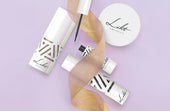
Liht Organics Black Friday: Enhance Your Beauty Routine with Vegan, Organic, and Natural Essentials!
As the holiday season approaches, there’s a sparkle in the air, and we at Liht Organics are thrilled to add a touch o...
-

Organic Makeup That Heals As It Conceals
Liht Organics Empowers Women With Only The Best For Their Beauty NeedsLiht Organics combines the best of both worlds:...
-
![[FEATURE] Liht Organics to debut at TFWA Asia Pacific show](//lihtorganics.com/cdn/shop/articles/1_1.png?v=1759328400&width=170)
[FEATURE] Liht Organics to debut at TFWA Asia Pacific show
‘Organic makeup that’s safe enough to eat’ — Liht Organics to debut at TFWA Asia Pacific show by Hannah Tan | 24 Apri...
-
![[FEATURE] The Singapore-based organic makeup brand is a first-time exhibitor at this year’s TFWA Asia Pacific Exhibition in Singapore in May 2025](//lihtorganics.com/cdn/shop/articles/2_1.png?v=1759328386&width=170)
[FEATURE] The Singapore-based organic makeup brand is a first-time exhibitor at this year’s TFWA Asia Pacific Exhibition in Singapore in May 2025
TFWA Asia Pacific preview: Liht Organics targets expansion in travel retail By DFNI Staff Writer The Singapore-bas...
-
![[FEATURE] Travel Retail Awards 2025 finalists - Best Make-up Product Color-Intense Liquid Lipstick – Liht Organics](//lihtorganics.com/cdn/shop/articles/4_e2f54f0f-fcd1-46e7-9990-fc9d29e35131.png?v=1759328382&width=170)
[FEATURE] Travel Retail Awards 2025 finalists - Best Make-up Product Color-Intense Liquid Lipstick – Liht Organics
Revealed: Travel Retail Awards 2025 finalists By Trbusiness Editor | Wednesday, 23 July 2025 15:21 TRBusiness is th...
-
![[FEATURE] Liht Organics targets expansion in travel retail](//lihtorganics.com/cdn/shop/articles/3_1.png?v=1759328346&width=170)
[FEATURE] Liht Organics targets expansion in travel retail
Organic makeup that’s safe enough to eat: Liht Organics targets expansion in travel retail By Laura Shirk Liht Organ...
-

[FEATURE] Gulf News: TikTok’s strawberry girl makeup trend: How to achieve that rosy glow inspired by Hailey Bieber
Berry, berry, strawberry, love strawberry, like BTS’s J-Hope, the band’s strawberry enthusiast once said. If only we ...
-

[FEATURE] Gulf Business Magazine : Liht-ing it up
Our founder, Nerissa Low was interviewed by Gulf Business, where she discussed her experience launching Liht, an orga...
-

[FEATURE] Daily Vanity: 11 local beauty brands owned by women – you’d be surprised how many of them started in their kitchens!
When we give a shout-out to homegrown beauty businesses, we aren’t just doing it for the sake of supporting local. Th...
-

[FEATURE] Entrepreneur ME : UAE-Based Liht Organics' Nerissa Low On Crafting An Organic Makeup Brand For The Skin-Conscious Consumer
As is the case with the origin stories of so many startups out there, Liht Organics came into being after its founder...
-
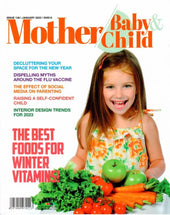
Mother, Baby & Child Editor’s Pick: Liht Organics Lights the Way
Excited to be the Mother, Baby & Child’s ‘Editors pick’ for their choice of Beauty brand.The article outlined the...
-
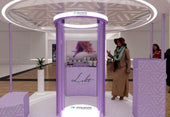
[FEATURE] EmiratesWoman - 8 Fabulous things to do in Dubai this weekend
by SARAH JOSEPHJANUARY 20, 2023Try the UAE’s first virtual reality makeup podium The popular VR-backed makeup exper...
-

Nerissa Low of Liht Organics On The Self-Care Routines & Practices Of Busy Entrepreneurs and Business Leaders
By Maria Angelova, CEO of Rebellious Intl.Date: 4 January, 2023Nerissa Low of Liht Organics On The Self-Care Routines...
-

Liht Organics: Meet the beauty brand that has caught the eye of the Royal Family of Bahrain
By Crystal Lee Digital Editor28 May 2021The world of clean beauty is, ironically, rather murky.That’s because the ter...
-

The latest luxury makeup and skincare drops, including serums, concealers, moisturisers and more
Allisa Noraini21 May, 2021It’s fine to splurge in the name of beauty. This new range of makeup and skincare drops are...
-

These SG Beauty Bosses Are Conquering The World Despite The Pandemic
First Singapore, then the US, China, Germany, Dubai, UK, South Korea, Malaysia, Hong Kong, Thailand, Australia… By...
-

Nerissa Low, Founder at Liht Organics
Written by Callum LaingPosted on December 26, 2020 10 min readNerissa Created Organic Makeup That Actually Improve...
-

Liht Organics – Makeup That Makes You
At Liht Organics, our mission is simple – to provide women (and men) with a safe experience when it comes to beauty s...
-

Why Should We Use Organic Makeup?
We cannot deny that cosmetics is one of our beauty essential item – it enhances our looks and conceals our flaws. Man...
-

Organic makeup and why your skin will love it: Liht Organics founder
By Jolene,July 27, 2020 |7 mins readOrganic make up in Singapore is a trend that is fast-catching on here as we becom...
-

[FEATURE] DC EDIT – Makeup & Confidence: Talking Self-love With Liht Organics’ Founder Nerissa Low
Makeup and confidence — the long, drawn-out fight that many of us have grappled with personally. I’m sure I’m not the...
-

[FEATURE] THE FEMALE CULTURE – I TRIED LIHT ORGANICS AND THIS IS HOW IT WENT
I’m a huge fan of makeup and I love testing out new products so I was pretty excited to get my hands on Liht Organics...
-

[FEATURE] SINGAPORE MOTHERHOOD – The Best Organic and Natural Skincare and Makeup for Pregnant and Breastfeeding Mums in Singapore
Pregnancy is a hormone-volatile period for women. One place where this makes itself seen and felt is on the skin. Som...
-

[FEATURE] AFTER CLINIC HOURS – 21 Back to Beauty Deals in Singapore (2020)
With spas and salons shuttered island wide for two months, I never thought I’d be this desperate for a good old’ Swed...
-

[FEATURE] KUL AL USRA MAGAZINE JUNE 2020
Choosing Pinks & Oranges this summer!Featured: Moisture Burst Lip Glaze in Pink Cupcake.
-
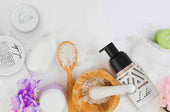
[FEATURE] Award-winning Organic Makeup Brand Liht Organics Gives Back to the Community & Environment During COVID-19
Singapore’s First Organic Makeup Brand with 100% Natural Makeup That Is Safe Enough to Eat Liht Organics promises org...
-

[FEATURE] COSMETICS DESIGN ASIA – COVID-19 ‘WAKE-UP CALL’: SINGAPORE’S LIHT ORGANICS SEES GLOBAL POTENTIAL AMID CLEAN BEAUTY CLAMOUR
Original article at: https://www.cosmeticsdesign-asia.com/Article/2020/06/26/Singapore-s-Liht-Organics-sees-globa...
-

[FEATURE] THE LIFESTYLE COLLECTIVE – BEAUTY SHOULD NEVER BE CRUEL
Date: June 24, 2020Author: Kristen Chen Liht (pronounced as light) Organics is a Singaporean organic makeup brand t...
-

[FEATURE] NÜYOU – 7 ONLINE PLATFORMS TO SHOP FOR CLEAN BEAUTY PRODUCTS
纯净美容(Clean Beauty)的美肤概念,再近几年来越来越受欢迎。随着消费者“爱自己”的美容意识逐步提升,对于用在脸上的所有物品、成分更为关注和讲究。以广义来讲,纯净美容主张使用“干净”成分和无毒配方,让肌肤的可能性损伤减到最小...
-

[FEATURE] COSMOPOLITAN MIDDLE EAST – 3 BENEFITS OF SWITCHING TO ORGANIC BEAUTY PRODUCTS THIS RAMADAN
By Cosmo – May 08, 2020Nerissa Low, founder of Liht Organics, shares the ultimate benefits of going organic this mont...
-

Nerissa Low of Liht Organics: “Seeing Light at the End of the Tunnel; 5 Reasons To Be Hopeful During this Corona Crisis”
Ely Weinschneider, Psy.D.May 8 · 9 min read …It shows us that everyone- whether we are rich or poor, regardless...
-

[FEATURE] AL MARA MAGAZINE APRIL 2020
-

[FEATURE] RetailME April 2020 – Liht Organics Stays Firm On Strengthening GCC Presence
-

[FEATURE] EMARAT AL YOUM NEWSPAPER – 27 MARCH 2020
English Translation:In spring and summer days, women love to have very light makeup in terms of color and texture, ...
-

[ARTICLE] WKND Magazine March 2020 – Know Your Organic Makeup
-

[FEATURE] AVIAMOST DUBAI – March/April 2020
English Translation:Lipstick with organic flowers. Thanks to the rich complex of natural ingredients, the lipstick...
-

[FEATURE] RUSSIAN EMIRATES (MAR/APR ISSUE)
Russian Emirates is a luxury lifestyle and fashion magazine covering information about the UAE, fashion, beauty, j...
-

[FEATURE] – KUL AL USRA MAGAZINE MARCH 2020
GET THE LOOK!
-

[FEATURE] IMAGES Retail ME – Liht Organics Announces GCC-Wide Expansion
Rupkatha Bhowmick Mar 10, 2020 The plan is to reach 75 Liht Organics retail touchpoints by June-July 2020 and touch...
-

[FEATURE] BABY & CHILD SPRING 2020 – NATURAL BEAUTIES
-

[FEATURE] AWQAT DUBAI – Liht Organics: The First Premium Organic Makeup Brand
ENGLISH TRANSLATION:Liht Organics – The First Premium Organic Makeup Brand Liht Organics, a premium organic beauty ...
-

[FEATURE] FRIDAY MAGAZINE – THE RETRO EYELINER LOOK
-

[FEATURE] MOTHER BABY & CHILD – VANITY ESSENTIALS – THE BEAUTY EDIT
-

[FEATURE] Masala! Magazine February/March 2020 Issue – Beauty Debut: Liht Organics
-

[Feature] – TimeOut Singapore – The Best Local Beauty and Skincare Brands In Singapore
For full article, click here.
-

[FEATURE] KUL AL USRA MAGAZINE – LIHT UP YOUR WORLD WITH LIHT ORGANICS
[ENGLISH TRANSLATION]Liht Up Your World With Liht OrganicsThe First Premium Organic Makeup Brand To Debut In The Mi...
-

[FEATURE] SINGAPORE TATLER – 9 Local Beauty Brands You Should Know Of
-

[FEATURE] nüyou August 2019 Issue – 15 Faces To Watch
-

[FEATURE] HONEYCOMBERS – Local Beauty Gurus: Singapore Beauty Brands You Need To Know About
-

[FEATURE] The Wellness Insider – Seeing The Liht With Founder Nerissa Low
-

[FEATURE] 联合早报 (LianHeZaoBao) – Women Entrepreneur Awards 2019 Coverage
-

[FEATURE] THE STRAITS TIMES Life – Clean beauty with a Singapore heart
-

Romantic Organic Makeup Looks for Valentine's Day: Tips, Tricks, and Product Picks
Valentine's Day is the perfect occasion to embrace the beauty of organic makeup. At Liht Organics, we believe in the ...
-
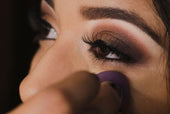
Enhance Your Eyes: A Guide to Eyeliner for Every Eye Shape with Liht Organics
Welcome to the Liht Organics blog, where we believe in celebrating the natural beauty of every eye shape. Today, we'r...
-
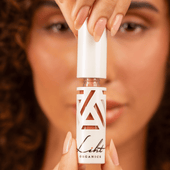
How to do makeup with only lipstick?
At Liht Organics, we believe in the power of clean beauty and the artistry of makeup. Makeup is more than just enhanc...
-

How to Clean Your Makeup Brushes in 6 Simple Steps
Cleaning your makeup brushes may seem like a tedious task, but it's an essential part of your beauty routine. Not onl...
-

Makeup Tips to Help You Look Your Most Flattering on Virtual Meetings!
After more than 2 years of work-from-home arrangement, and possibly hundreds of zoom calls and Google meet virtual me...
-
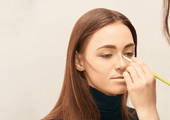
Learn How to Contour with This Simple Guide for Beginners
Want to take your makeup to the next level? Try contouring to achieve a more defined or sculpted look à la the Kardas...
-
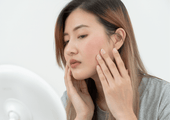
Essential and Easy Makeup Tips for Sensitive Skin
Living with sensitive skin conditions like eczema, psoriasis, and more is already not an easy feat. Throw in makeup t...
-

Raising Your Vibration: A Liht Organics Guide for Empowerment This International Women's Day
wp:paragraph As International Women's Day (IWD) approaches, it serves as a powerful reminder of the journey towards s...
-

The Beauty of Going Bare: Why Sleeping with Makeup is a No-No
Have you ever had one of those nights where you're too tired to clean off your makeup? You might believe, "Skipping...
-

Breast Cancer Awareness: Empower Your Beauty with Liht Organics Makeup
During October, we observe Breast Cancer Awareness Month as a way to unite and bring attention to breast cancer whil...
-

The Hidden Dangers of Carmine in Makeup Colorants: Embracing Healthier and Vegan Options
Makeup has become an integral part of our daily routines, allowing us to express our unique beauty. However, as we pr...
-

How can I ensure that my makeup products are organic and won't harm my skin?
When it comes to makeup, it’s important to be mindful of what you’re putting on your skin. With so many products on t...
-
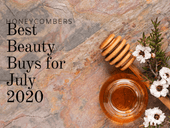
[FEATURE] HONEYCOMBERS – BEST BEAUTY BUYS IN JULY
by Nicole NithiyahWhat’s hot in our beauty hit list: Honest thoughts and top beauty stories we’re swooning over. As w...
-

Liht Organics Introduces Exclusive Gift Sets: Enhance Your Beauty This Festive Season!
As the holiday season approaches and the year draws to a close, Liht Organics is thrilled to present two enchanting g...
-

Get Spooktacular with the Best Halloween Makeup Ideas using Liht Organics' All-Natural, Vegan, and Cruelty-Free Cosmetics!
With Halloween just around the corner, it’s time to let your creativity shine and transform yourself into a spooky,...
-

Celebrating World Animal Day with Liht Organics: Embracing Natural Cruelty-Free Makeup
wp:paragraph As we observe World Animal Day, the team at Liht Organics takes great pride in honoring our pledge to...
-
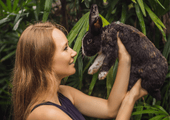
Reasons Why You Should Choose Cruelty-Free Cosmetics Instead!
With increasing exposés unveiling the ugly truth behind animal testing that goes on in the beauty industry, it is lit...
-

Celebrate Singles Day with Makeup That Empowers – 22% Off at LIHT Organics!
This Singles Day, treat yourself to beauty that goes beyond skin-deep. At LIHT Organics, we believe makeup is about s...
-

Preparing for the Cozy Beauty of Autumn: A Preview of Your Fall Look
As we bid farewell to the warm, sun-kissed days of summer, it’s never too early to start dreaming about the enchantin...
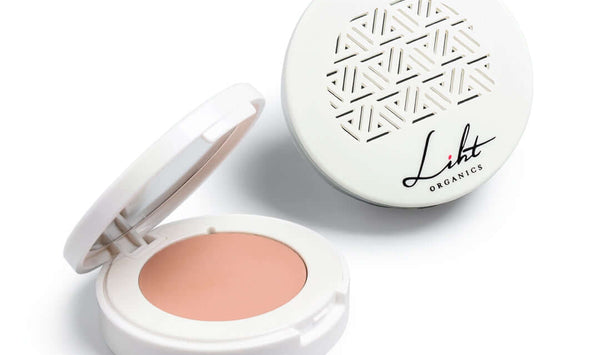
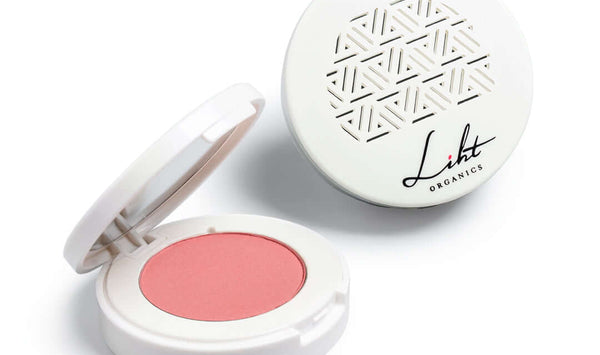
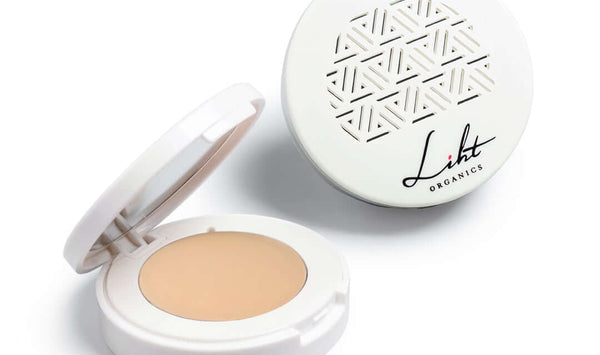
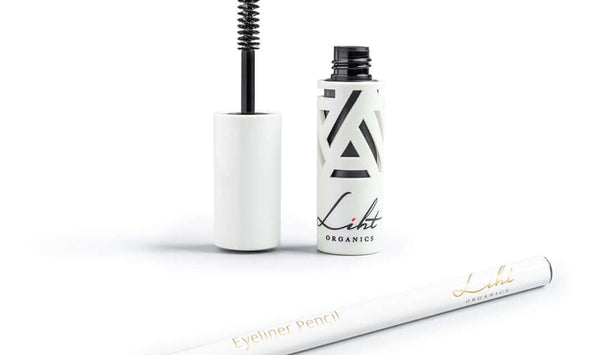
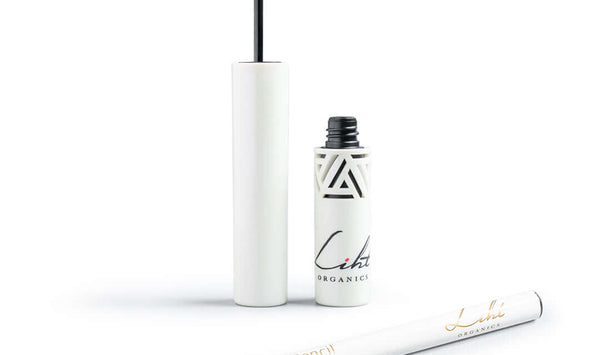
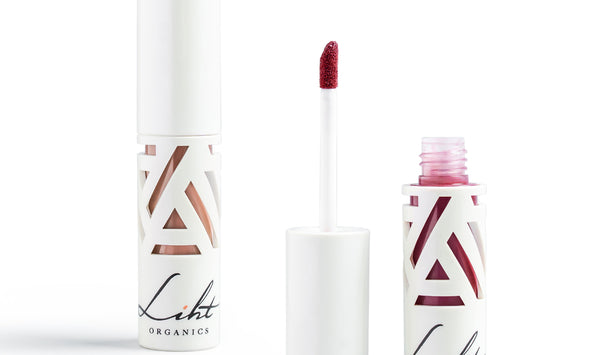
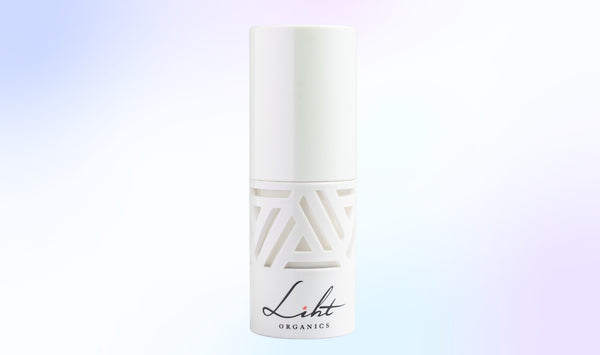

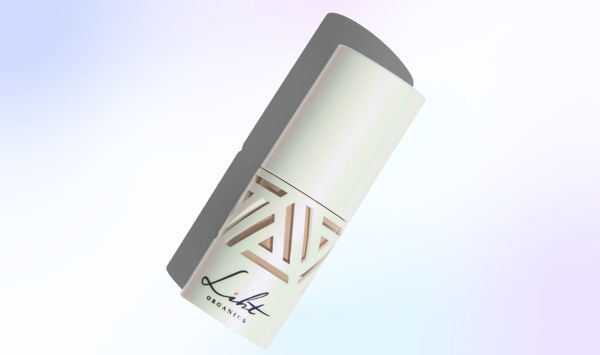
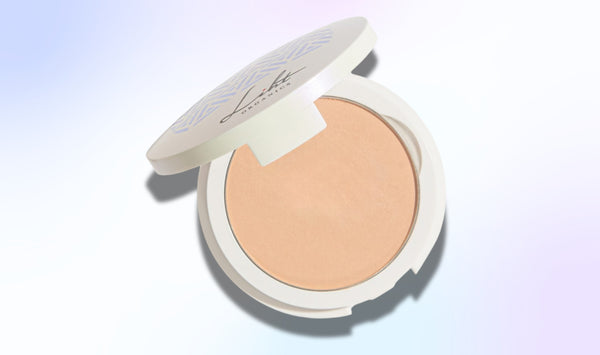
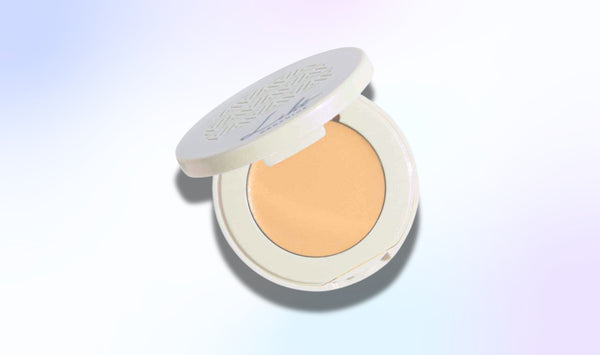
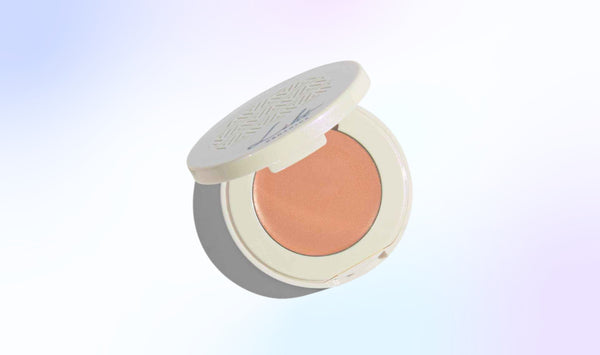
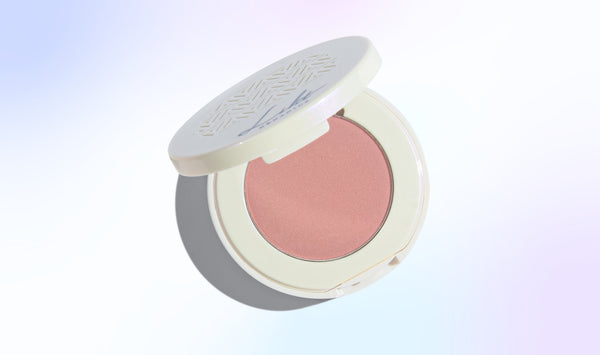
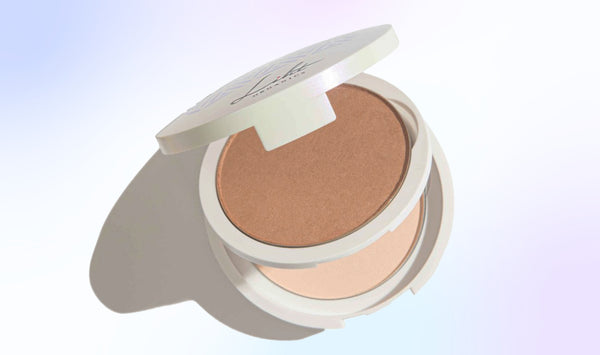
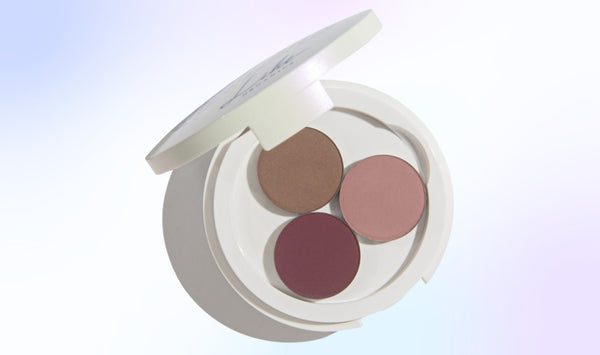
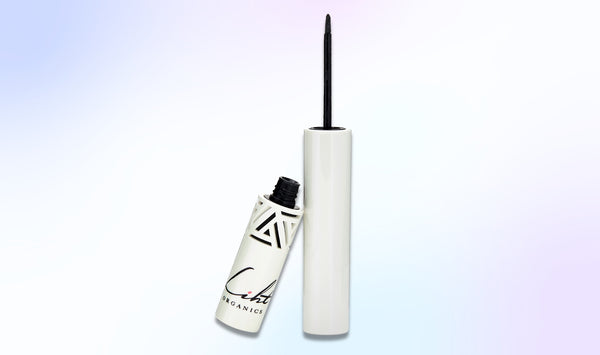
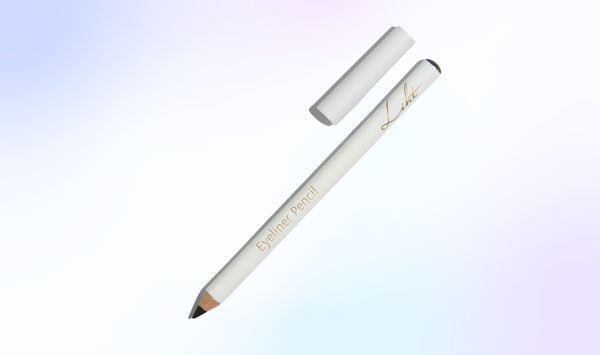
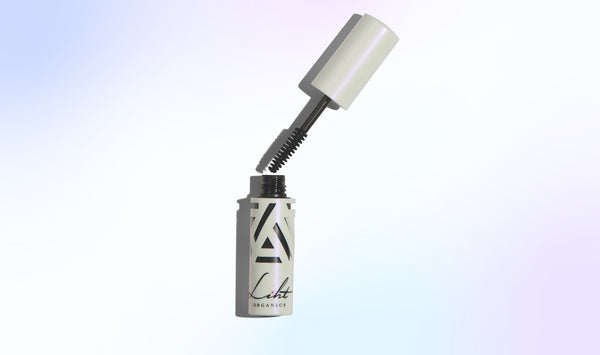
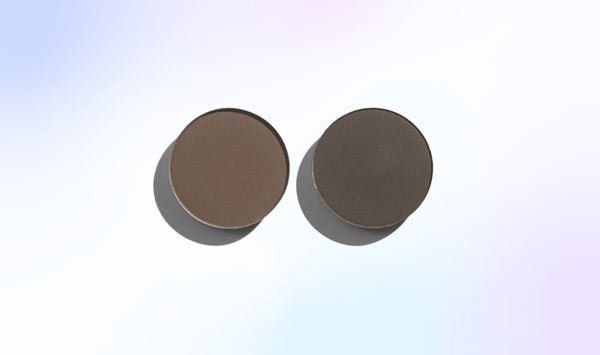
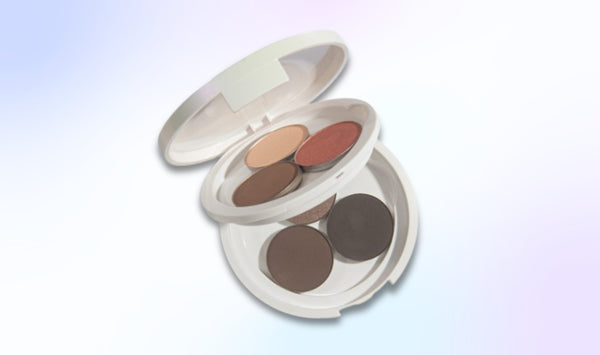
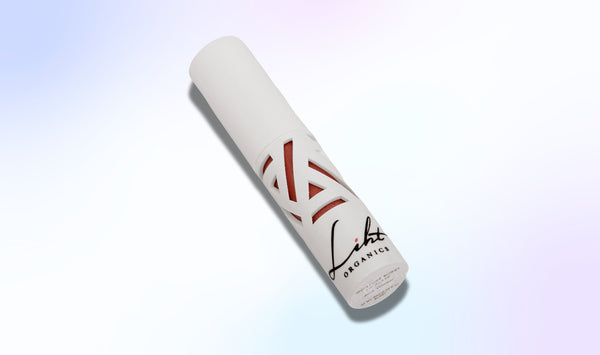
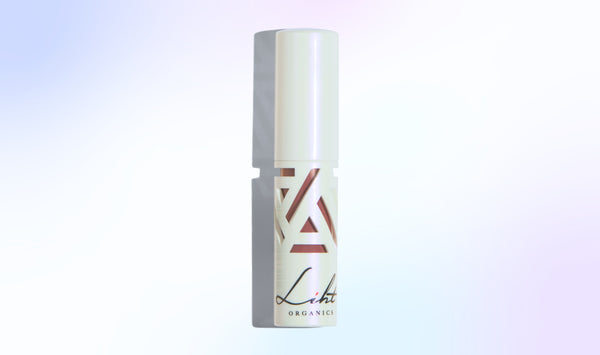
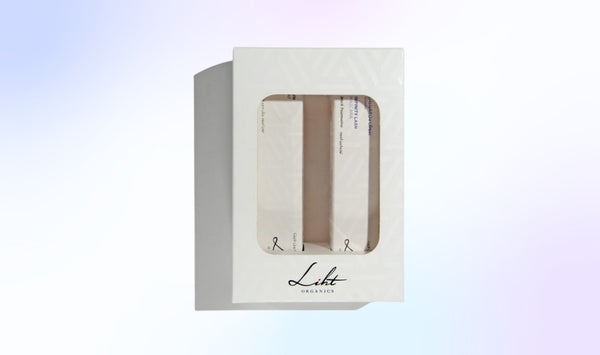
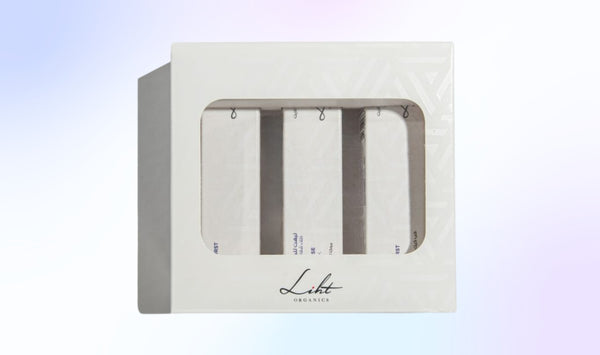


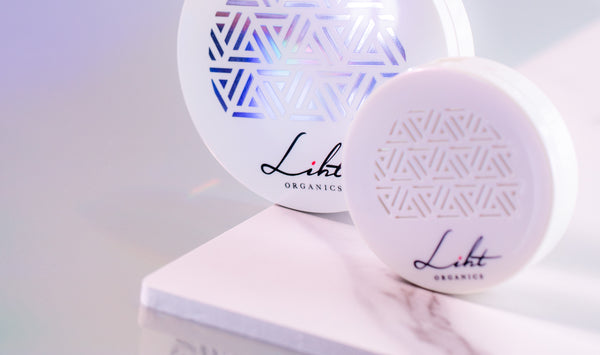
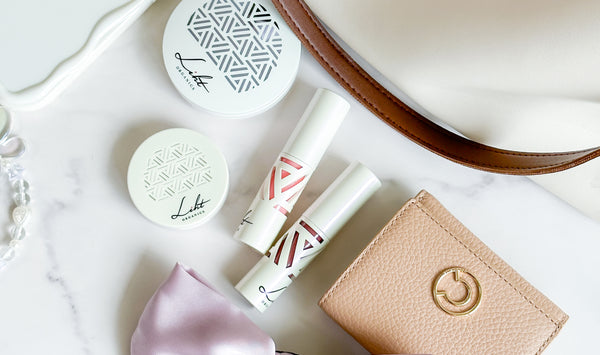
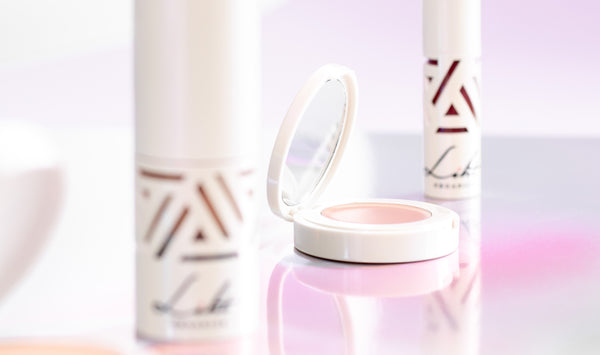




![[FEATURE] Liht Organics to debut at TFWA Asia Pacific show](http://lihtorganics.com/cdn/shop/articles/1_1.png?v=1759328400&width=170)
![[FEATURE] The Singapore-based organic makeup brand is a first-time exhibitor at this year’s TFWA Asia Pacific Exhibition in Singapore in May 2025](http://lihtorganics.com/cdn/shop/articles/2_1.png?v=1759328386&width=170)
![[FEATURE] Travel Retail Awards 2025 finalists - Best Make-up Product Color-Intense Liquid Lipstick – Liht Organics](http://lihtorganics.com/cdn/shop/articles/4_e2f54f0f-fcd1-46e7-9990-fc9d29e35131.png?v=1759328382&width=170)
![[FEATURE] Liht Organics targets expansion in travel retail](http://lihtorganics.com/cdn/shop/articles/3_1.png?v=1759328346&width=170)
































































